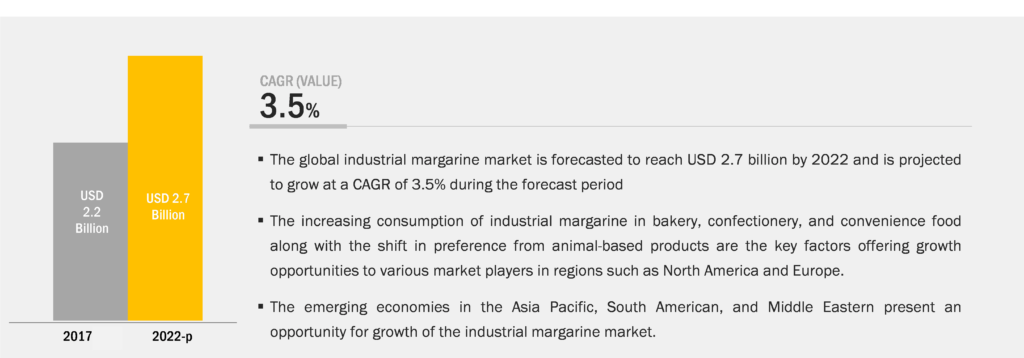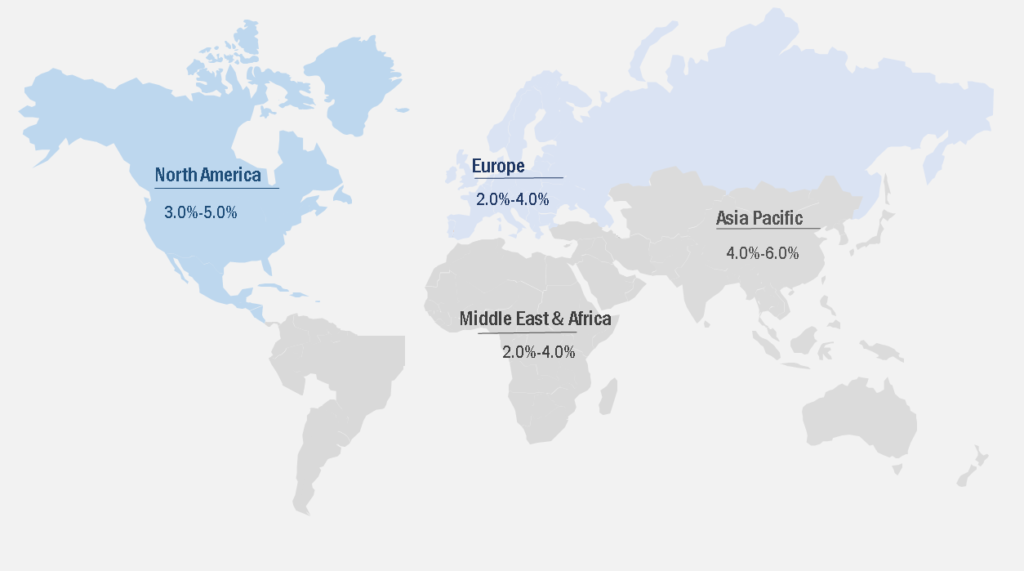Low price of margarine has led to an increase in the application of margarine as a substitute for butter in the food processing industry
Margarine is a non-dairy product produced from vegetable or animal fat. It is used as an alternative for butter for baking, toppings, spreads, and other cooking purposes. It is majorly used in bakery products such as pastries or cookies. It is an additive with varied tastes and properties as compared to butter. Margarine is prepared from vegetable oils, and therefore, contains unsaturated (polyunsaturated & monounsaturated) fats. Developing countries such as China and India, in the coming years, are expected to experience a strong surge in demand for industrial margarine, as consumers in these countries are seeking natural food products due to growing health concerns and instances of cardiovascular diseases in these countries, which, in turn, is driving the market for industrial margarine.
Low Prices Of Industrial Margarine Globally Is Expected To Drive Its Market Growth

e – Estimated; p – Projected
Source: Secondary Research, Primary Interviews, Related Research Publications, Press Releases, Industry Journals, Government Publications, and MarketsandMarkets Analysis
The global market for industrial margarine is projected to reach USD 2.7 billion by 2022, at a CAGR of 3.5%.
The global industrial margarine market has witnessed strong growth trends in the last five years. Demand for industrial margarine is growing in developed regions such as North America and Europe. The consumer preference for organic products is increasing, due to which the manufacturers are more interested in processing plant-based margarine. Furthermore, manufacturers use margarine to cut down costs and provide products at lower costs to increase profits and gain a larger market share. Also, the growth in the bakery, confectionery, and convenience food segments, globally is fueling the demand for margarine, as it is a cost-effective substitute for butter.
Increasing consumption of margarine and changing consumers preferences in the developing market are fueling the market for industrial margarine
The industrial margarine sector showcases positive growth opportunities, due to the growth in the convenience food industry coupled with a trend of maintaining nutritionally balanced lifestyles among consumers. Moreover, the low price of industrial margarine, globally, has led to a rise in its consumption. By using margarine as a substitute for butter, production costs can be reduced, resulting in a lower cost of production, thereby enabling higher profit margins. Manufacturers are also focusing on the innovation of new margarine products in various application areas such as bakery and confectionery to attract more consumers and gain an edge over their competitors. This, in turn, is prompting other food manufacturers and small-scale companies to invest in alternatives to conventional butter. However, factors such as a rise in health awareness and obesity concerns continue to limit growth opportunities in the sector.
Download PDF Brochure:
https://www.marketsandmarkets.com/pdfdownloadNew.asp?id=169716000
The bakery segment is set to dominate the application segment of the industrial margarine market
The application segment of the industrial margarine market was dominated by the whole bakery segment, which accounted for a major share in 2015. Bakery products such as cakes and pastries call for replacement of butter and oil among consumers who demand low-fat and low-calorie food products. Manufacturers of bakery products are targeting consumers with low-calorie products to boost sales in a stagnant and matured markets. This is the key trend shaping the global bakery market and has led to the growth of the industrial margarine market. Bakery products are largely consumed in North America and Europe; hence, the market size for industrial margarine in these regions is poised to grow.
Geographical Prominence
North America accounted for the largest share in the global market in 2015, followed by Europe. The North American industrial margarine market is led by its wide applications in various food, confectionery, bakery, and convenience products along with its health benefits. The market is also characterized by the presence of large-scale industrial margarine manufacturers such as ConAgra (US) and Bunge Limited (US). Technological advancements have made industrial margarine available for a wide range of applications in the bakery and confectionery sectors such as spreading, melting, baking, and sautéing, which is likely to drive the growth in the region.
Projected growth rate of industrial margarine MARKET, BY REGION, 2015–2022 (USD MILLION)

Source: Secondary Research, Primary Interviews, Related Research Publications, Government Publications, Press Releases, Industry Journals, MarketsandMarkets Analysis
The Asia Pacific region is projected to be the fastest-growing market in the industrial margarine market. The food & beverages market in this region is currently undergoing a transformation in response to rapid urbanization and the liberalization of foreign direct investment in the food sector. Key markets in the Asia Pacific region include China, India, Japan, and Australia. These countries have vast areas under agriculture and production of plants such as palm oil and sunflower oil that are the primary raw material for producing margarine.
Make an Inquiry:
https://www.marketsandmarkets.com/Enquiry_Before_BuyingNew.asp?id=169716000
Conclusion
The global market for industrial
margarine witnessed significant growth in 2015. North America dominated the
market for industrial margarine, followed by Europe and Asia Pacific. However,
the demand for the usage of industrial margarine is expected to grow at an
exponential rate in new & emerging markets such as South Asian countries
due to an increase in the demand for confectionery and convenience foods. In
addition, Asia also provides a cost advantage in terms of production, labor
cost, and processing. High demand, coupled with low cost of production, is a
key feature that will aid manufacturers.